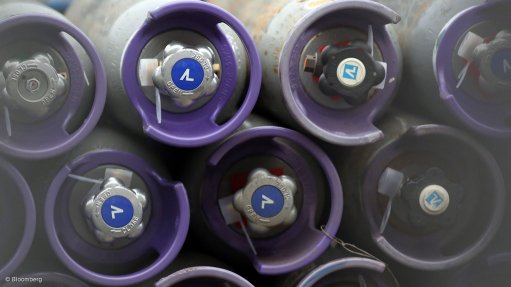Adventures on the interconnected electricity system
In my last column on the Eskom interconnected power system, I explained that I worked for the electricity utility as the senior engineer for operations in the Eastern Cape for just under two years. The backbone of the national grid was the 400 kV powerline system and the 220 kV powerline system, which formed the main transmission system.
The 400 kV and 220 kV powerline systems fed, through transformers, into the 132 kV distribution systems. The whole power system, including distribution, was known as the interconnected power system. Each region – I think there were seven of them – had a 132 kV distribution system. My region, the Eastern Cape, extended from Colesberg to the Transkei border and then south to about 50 km south of Port Elizabeth. Eastern Cape Control reported to me and all I had to do was to make decisions on how to operate the Eskom Eastern Cape region system so as to keep outages to a minimum. I reported to the regional manager through the chief engineer for operations and had a reporting function to National Control, which was on the alert for operating errors in our system.
Here is one adventure. During an infrared inspection of the Pembroke substation, the inspection team noted that the connection to one of the structure-mounted voltage transformers seemed to be very hot. The voltage transformer was on the ‘outboard’ side of the 220 kV Poseidon–Pembroke line.
Replacing the voltage transformer would be difficult, so I asked the live line team to try to see if they could tighten the connections, working on the line live, with special equipment. This had to be done during a period of low load, early on a Sunday morning, since, if something went wrong and the 220 kV line tripped, we would have to try running the whole of East London and surrounding areas on the Port Rex gas turbines – which only supplied 60 MW. The Sunday load of East London and surrounding areas was about 80 MW. This was not enough, so I briefed the Buffalo power station, in East London, to fire up and provide a spinning reserve of 40 MW. We ran through this. Then the live line team did its stuff but the connections remained hot. Not as hot as before, but nonetheless hot. So the voltage transformer would have to be replaced, which we scheduled for the following weekend. We started the gas turbines and picked up the East London and surrounding areas load and opened the 220 kV line infeed from Poseidon. The voltage transformer was replaced. All very good. It was 04:00 when the line links were closed and we waited for the main Poseidon–Pembroke 220 kV circuit breaker to close. The circuit breaker is a four-pole structure of some size, mounted on long insulators. As I stood outside the Pembroke control room, I briefly noticed dancing sparks on the circuit breaker insulators. A moment later, the circuit breaker exploded in a beautiful firework of sparks, flames and burning debris.
I rushed into the control room. Andre, the senior operator on duty, knew what had happened. Clearly, we could not replace the circuit breaker any time soon. Fortunately, there was an option: we could close the parallel bypass circuit breaker. Andre and I sat on the floor, discussing options. He was not in favour of closing the bypass circuit breaker. He thought the circuit breaker which blew up was overstressed by the synchronising voltage. He suggested a clever plan that would involve a ten-minute outage to pick up the East London and surrounding areas load, after which we could close the bypass circuit breaker and switch off the turbines and power station. It worked. When I got home at 06:00 my wife sniffed me for alcohol and, detecting none, asked suspiciously where I had been.
Comments
Press Office
Announcements
What's On
Subscribe to improve your user experience...
Option 1 (equivalent of R125 a month):
Receive a weekly copy of Creamer Media's Engineering News & Mining Weekly magazine
(print copy for those in South Africa and e-magazine for those outside of South Africa)
Receive daily email newsletters
Access to full search results
Access archive of magazine back copies
Access to Projects in Progress
Access to ONE Research Report of your choice in PDF format
Option 2 (equivalent of R375 a month):
All benefits from Option 1
PLUS
Access to Creamer Media's Research Channel Africa for ALL Research Reports, in PDF format, on various industrial and mining sectors
including Electricity; Water; Energy Transition; Hydrogen; Roads, Rail and Ports; Coal; Gold; Platinum; Battery Metals; etc.
Already a subscriber?
Forgotten your password?
Receive weekly copy of Creamer Media's Engineering News & Mining Weekly magazine (print copy for those in South Africa and e-magazine for those outside of South Africa)
➕
Recieve daily email newsletters
➕
Access to full search results
➕
Access archive of magazine back copies
➕
Access to Projects in Progress
➕
Access to ONE Research Report of your choice in PDF format
RESEARCH CHANNEL AFRICA
R4500 (equivalent of R375 a month)
SUBSCRIBEAll benefits from Option 1
➕
Access to Creamer Media's Research Channel Africa for ALL Research Reports on various industrial and mining sectors, in PDF format, including on:
Electricity
➕
Water
➕
Energy Transition
➕
Hydrogen
➕
Roads, Rail and Ports
➕
Coal
➕
Gold
➕
Platinum
➕
Battery Metals
➕
etc.
Receive all benefits from Option 1 or Option 2 delivered to numerous people at your company
➕
Multiple User names and Passwords for simultaneous log-ins
➕
Intranet integration access to all in your organisation


















